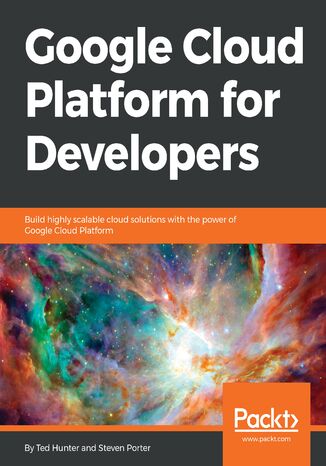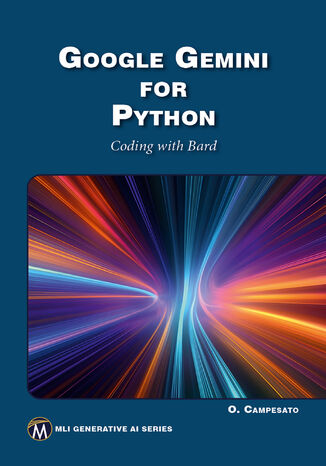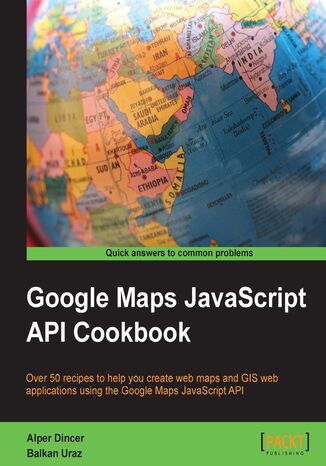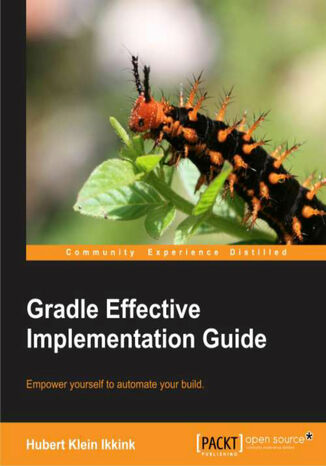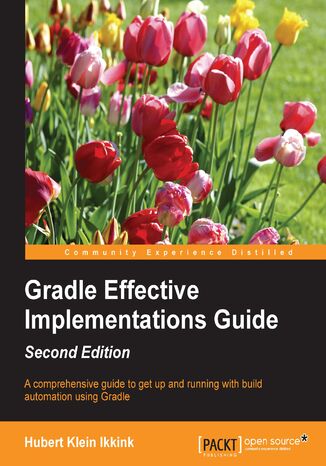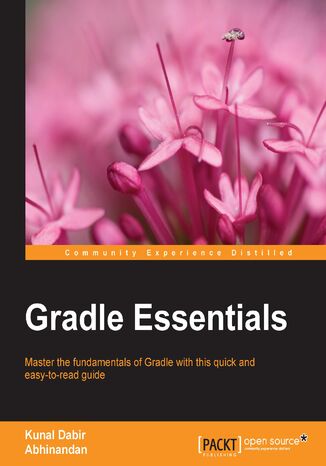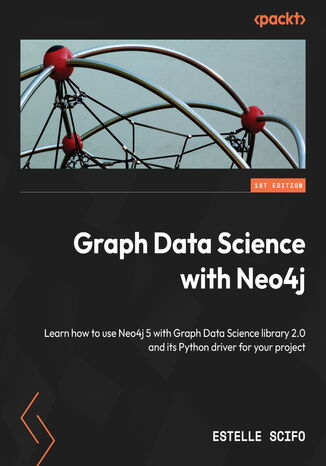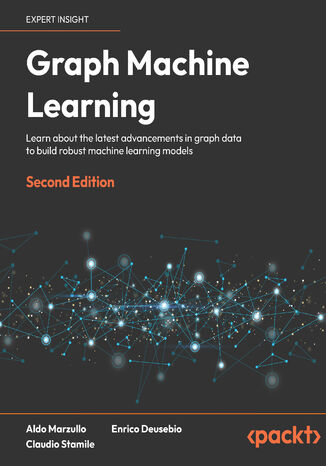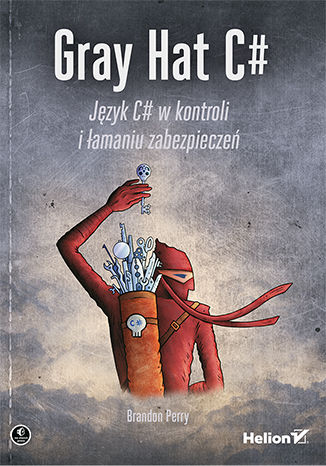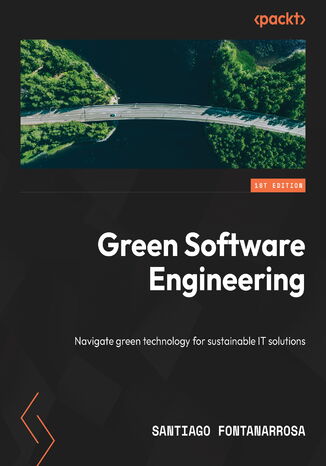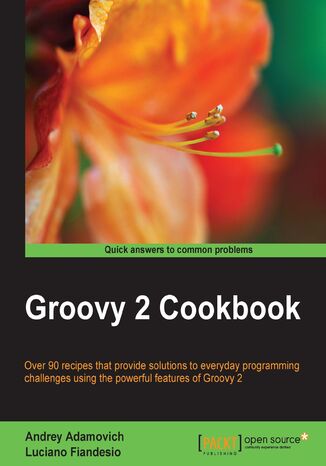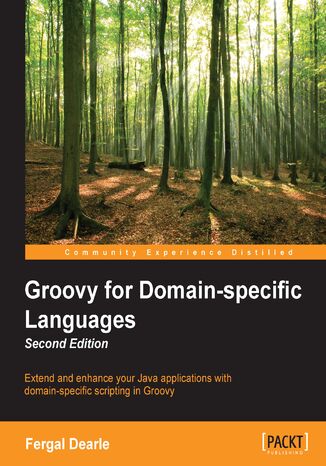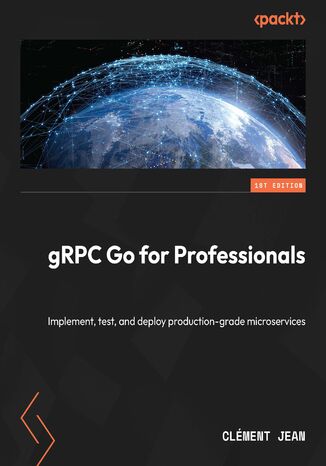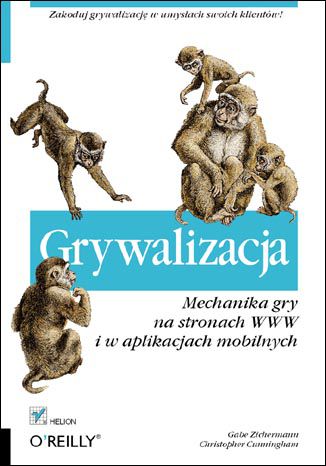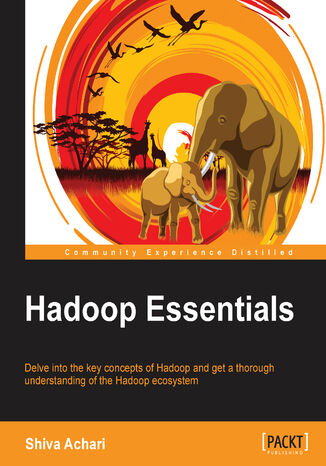Categories
Ebooks
-
Business and economy
- Bitcoin
- Businesswoman
- Coaching
- Controlling
- E-business
- Economy
- Finances
- Stocks and investments
- Personal competence
- Computer in the office
- Communication and negotiation
- Small company
- Marketing
- Motivation
- Multimedia trainings
- Real estate
- Persuasion and NLP
- Taxes
- Social policy
- Guides
- Presentations
- Leadership
- Public Relation
- Reports, analyses
- Secret
- Social Media
- Sales
- Start-up
- Your career
- Management
- Project management
- Human Resources
-
For children
-
For youth
-
Education
-
Encyclopedias, dictionaries
-
E-press
- Architektura i wnętrza
- Health and Safety
- Biznes i Ekonomia
- Home and garden
- E-business
- Ekonomia i finanse
- Esoterecism
- Finances
- Personal finance
- Business
- Photography
- Computer science
- HR & Payroll
- For women
- Computers, Excel
- Accounts
- Culture and literature
- Scientific and academic
- Environmental protection
- Opinion-forming
- Education
- Taxes
- Travelling
- Psychology
- Religion
- Agriculture
- Book and press market
- Transport and Spedition
- Healthand beauty
-
History
-
Computer science
- Office applications
- Data bases
- Bioinformatics
- IT business
- CAD/CAM
- Digital Lifestyle
- DTP
- Electronics
- Digital photography
- Computer graphics
- Games
- Hacking
- Hardware
- IT w ekonomii
- Scientific software package
- School textbooks
- Computer basics
- Programming
- Mobile programming
- Internet servers
- Computer networks
- Start-up
- Operational systems
- Artificial intelligence
- Technology for children
- Webmastering
-
Other
-
Foreign languages
-
Culture and art
-
School reading books
-
Literature
- Antology
- Ballade
- Biographies and autobiographies
- For adults
- Dramas
- Diaries, memoirs, letters
- Epic, epopee
- Essay
- Fantasy and science fiction
- Feuilletons
- Work of fiction
- Humour and satire
- Other
- Classical
- Crime fiction
- Non-fiction
- Fiction
- Mity i legendy
- Nobelists
- Novellas
- Moral
- Okultyzm i magia
- Short stories
- Memoirs
- Travelling
- Narrative poetry
- Poetry
- Politics
- Popular science
- Novel
- Historical novel
- Prose
- Adventure
- Journalism, publicism
- Reportage novels
- Romans i literatura obyczajowa
- Sensational
- Thriller, Horror
- Interviews and memoirs
-
Natural sciences
-
Social sciences
-
School textbooks
-
Popular science and academic
- Archeology
- Bibliotekoznawstwo
- Cinema studies
- Philology
- Polish philology
- Philosophy
- Finanse i bankowość
- Geography
- Economy
- Trade. World economy
- History and archeology
- History of art and architecture
- Cultural studies
- Linguistics
- Literary studies
- Logistics
- Maths
- Medicine
- Humanities
- Pedagogy
- Educational aids
- Popular science
- Other
- Psychology
- Sociology
- Theatre studies
- Theology
- Economic theories and teachings
- Transport i spedycja
- Physical education
- Zarządzanie i marketing
-
Guides
-
Game guides
-
Professional and specialist guides
-
Law
- Health and Safety
- History
- Road Code. Driving license
- Law studies
- Healthcare
- General. Compendium of knowledge
- Academic textbooks
- Other
- Construction and local law
- Civil law
- Financial law
- Economic law
- Economic and trade law
- Criminal law
- Criminal law. Criminal offenses. Criminology
- International law
- International law
- Health care law
- Educational law
- Tax law
- Labor and social security law
- Public, constitutional and administrative law
- Family and Guardianship Code
- agricultural law
- Social law, labour law
- European Union law
- Industry
- Agricultural and environmental
- Dictionaries and encyclopedia
- Public procurement
- Management
-
Tourist guides and travel
- Africa
- Albums
- Southern America
- North and Central America
- Australia, New Zealand, Oceania
- Austria
- Asia
- Balkans
- Middle East
- Bulgary
- China
- Croatia
- The Czech Republic
- Denmark
- Egipt
- Estonia
- Europe
- France
- Mountains
- Greece
- Spain
- Holand
- Iceland
- Lithuania
- Latvia
- Mapy, Plany miast, Atlasy
- Mini travel guides
- Germany
- Norway
- Active travelling
- Poland
- Portugal
- Other
- Przewodniki po hotelach i restauracjach
- Russia
- Romania
- Slovakia
- Slovenia
- Switzerland
- Sweden
- World
- Turkey
- Ukraine
- Hungary
- Great Britain
- Italy
-
Psychology
- Philosophy of life
- Kompetencje psychospołeczne
- Interpersonal communication
- Mindfulness
- General
- Persuasion and NLP
- Academic psychology
- Psychology of soul and mind
- Work psychology
- Relacje i związki
- Parenting and children psychology
- Problem solving
- Intellectual growth
- Secret
- Sexapeal
- Seduction
- Appearance and image
- Philosophy of life
-
Religion
-
Sport, fitness, diets
-
Technology and mechanics
Audiobooks
-
Business and economy
- Bitcoin
- Businesswoman
- Coaching
- Controlling
- E-business
- Economy
- Finances
- Stocks and investments
- Personal competence
- Communication and negotiation
- Small company
- Marketing
- Motivation
- Real estate
- Persuasion and NLP
- Taxes
- Social policy
- Guides
- Presentations
- Leadership
- Public Relation
- Secret
- Social Media
- Sales
- Start-up
- Your career
- Management
- Project management
- Human Resources
-
For children
-
For youth
-
Education
-
Encyclopedias, dictionaries
-
E-press
-
History
-
Computer science
-
Other
-
Foreign languages
-
Culture and art
-
School reading books
-
Literature
- Antology
- Ballade
- Biographies and autobiographies
- For adults
- Dramas
- Diaries, memoirs, letters
- Epic, epopee
- Essay
- Fantasy and science fiction
- Feuilletons
- Work of fiction
- Humour and satire
- Other
- Classical
- Crime fiction
- Non-fiction
- Fiction
- Mity i legendy
- Nobelists
- Novellas
- Moral
- Okultyzm i magia
- Short stories
- Memoirs
- Travelling
- Poetry
- Politics
- Popular science
- Novel
- Historical novel
- Prose
- Adventure
- Journalism, publicism
- Reportage novels
- Romans i literatura obyczajowa
- Sensational
- Thriller, Horror
- Interviews and memoirs
-
Natural sciences
-
Social sciences
-
Popular science and academic
-
Guides
-
Professional and specialist guides
-
Law
-
Tourist guides and travel
-
Psychology
- Philosophy of life
- Interpersonal communication
- Mindfulness
- General
- Persuasion and NLP
- Academic psychology
- Psychology of soul and mind
- Work psychology
- Relacje i związki
- Parenting and children psychology
- Problem solving
- Intellectual growth
- Secret
- Sexapeal
- Seduction
- Appearance and image
- Philosophy of life
-
Religion
-
Sport, fitness, diets
-
Technology and mechanics
Videocourses
-
Data bases
-
Big Data
-
Biznes, ekonomia i marketing
-
Cybersecurity
-
Data Science
-
DevOps
-
For children
-
Electronics
-
Graphics/Video/CAX
-
Games
-
Microsoft Office
-
Development tools
-
Programming
-
Personal growth
-
Computer networks
-
Operational systems
-
Software testing
-
Mobile devices
-
UX/UI
-
Web development
-
Management
Podcasts
- Ebooks
- Computer science
- Programming
Programming
Our online library contains some publications, thanks to which programming will have no secrets from you. The books included here will introduce you to such languages as HTML, JavaScript, Python and CSS. Due to them, you will also learn how to create effective algorithms, design mobile applications or take care of the correct information architecture on websites.
Google Cloud Platform (GCP) provides autoscaling compute power and distributed in-memory cache, task queues, and datastores to write, build, and deploy Cloud-hosted applications.With Google Cloud Platform for Developers, you will be able to develop and deploy scalable applications from scratch and make them globally available in almost any language. This book will guide you in designing, deploying, and managing applications running on Google Cloud. You’ll start with App Engine and move on to work with Container Engine, compute engine, and cloud functions. You’ll learn how to integrate your new applications with the various data solutions on GCP, including Cloud SQL, Bigtable, and Cloud Storage. This book will teach you how to streamline your workflow with tools such as Source Repositories, Container Builder, and StackDriver. Along the way, you’ll see how to deploy and debug services with IntelliJ, implement continuous delivery pipelines, and configure robust monitoring and alerting for your production systems.By the end of this book, you’ll be well-versed with all the development tools of Google Cloud Platform, and you’ll develop, deploy, and manage highly scalable and reliable applications.
Google Gemini for Python. Coding with Bard: Mastering Python with Google's AI Tools
Mercury Learning and Information, Oswald Campesato
This book bridges Python 3 programming and Generative AI, equipping readers with the skills to navigate both domains confidently. It starts with Python basics, covering data types, number formatting, text manipulation, loops, functions, data structures, NumPy, Pandas, conditional logic, and reserved words. You'll also learn about handling user input, managing exceptions, and working with command-line arguments.The journey continues into Generative AI, distinguishing it from Conversational AI. It introduces popular platforms and models, including Bard (now called Gemini) and its competitors, providing insights into their capabilities, strengths, weaknesses, and applications. The final chapters show how to generate various Python 3 code samples using Gemini.Understanding these concepts is crucial for modern programming and AI applications. This book transitions readers from basic Python programming to advanced AI techniques, blending theoretical knowledge with practical skills. Companion files with source code and figures enhance the learning experience, making this an essential resource for mastering Python 3 and Generative AI.
Day by day, the use of location data is becoming more and more popular, and Google is one of the main game changers in this area. The Google Maps JavaScript API is one of the most functional and robust mapping APIs used among Geo developers. With Google Maps, you can build location-based apps, maps for mobile apps, visualize geospatial data, and customize your own maps.Google Maps JavaScript API Cookbook is a practical, hands-on guide that provides you with a number of clear, step-by-step recipes that will help you to unleash the capabilities of the Google Maps JavaScript API in conjunction with open source or commercial GIS servers and services through a number of practical examples of real world scenarios.This book begins by covering the essentials of including simple maps for Web and mobile, adding vector and raster layers, styling your own base maps, creating your own controls and responding to events, and including your own events.You will learn how to integrate open source or commercial GIS servers and services including ArcGIS Server, GeoServer, CartoDB, Fusion Tables, and Google Maps Engine with the Google Maps JavaScript API. You will also extend the Google Maps JavaScript API to push its capabilities to the limit with additional libraries and services including geometry, AdSense, geocoding, directions, and StreetView.This book covers everything you need to know about creating a web map or GIS applications using the Google Maps JavaScript API on multiple platforms.
Hubert Klein Ikkink, Gradle GmbH
Gradle is the next generation in build automation. It uses convention-over-configuration to provide good defaults, but is also flexible enough to be usable in every situation you encounter in daily development. Build logic is described with a powerful DSL and empowers developers to create reusable and maintainable build logic.Gradle Effective Implementation Guide is a great introduction and reference for using Gradle. The Gradle build language is explained with hands on code and practical applications. You learn how to apply Gradle in your Java, Scala or Groovy projects, integrate with your favorite IDE and how to integrate with well-known continuous integration servers.Start with the foundations and work your way through hands on examples to build your knowledge of Gradle to skyscraper heights. You will quickly learn the basics of Gradle, how to write tasks, work with files and how to use write build scripts using the Groovy DSL. Then as you develop you will be shown how to use Gradle for Java projects. Compile, package, test and deploy your applications with ease. When you've mastered the simple, move on to the sublime and integrate your code with continuous integration servers and IDEs. By the end of the Gradle Effective Implementation Guide you will be able to use Gradle in your daily development. Writing tasks, applying plugins and creating build logic will be second nature.
Gradle is a project automation tool that has a wide range of applications. The basic aim of Gradle is to automate a wide variety of tasks performed by software developers, including compiling computer source code to binary code, packaging binary codes, running tests, deploying applications to production systems, and creating documentation.The book will start with the fundamentals of Gradle and introduce you to the tools that will be used in further chapters. You will learn to create and work with Gradle scripts and then see how to use Gradle to build your Java Projects. While building Java application, you will find out about other important topics such as dependency management, publishing artifacts, and integrating the application with other JVM languages such as Scala and Groovy. By the end of this book, you will be able to use Gradle in your daily development. Writing tasks, applying plugins, and creating build logic will be your second nature.
Kunal Dabir, Abhinandan Maheshwari
Gradle is an advanced and modern build automation tool. It inherits the best elements of the past generation of build tools, but it also differs and innovates to bring terseness, elegance, simplicity, and the flexibility to build.Right from installing Gradle and writing your first build file to creating a fully-fledged multi-module project build, this book will guide you through its topics in a step-by-step fashion.You will get your hands dirty with a simple Java project built with Gradle and go on to build web applications that are run with Jetty or Tomcat. We take a unique approach towards explaining the DSL using the Gradle API, which makes the DSL more accessible and intuitive. All in all, this book is a concise guide to help you decipher the Gradle build files, covering the essential topics that are most useful in real-world projects. With every chapter, you will learn a new topic and be able to readily implement your build files.
Neo4j, along with its Graph Data Science (GDS) library, is a complete solution to store, query, and analyze graph data. As graph databases are getting more popular among developers, data scientists are likely to face such databases in their career, making it an indispensable skill to work with graph algorithms for extracting context information and improving the overall model prediction performance.Data scientists working with Python will be able to put their knowledge to work with this practical guide to Neo4j and the GDS library that offers step-by-step explanations of essential concepts and practical instructions for implementing data science techniques on graph data using the latest Neo4j version 5 and its associated libraries. You’ll start by querying Neo4j with Cypher and learn how to characterize graph datasets. As you get the hang of running graph algorithms on graph data stored into Neo4j, you’ll understand the new and advanced capabilities of the GDS library that enable you to make predictions and write data science pipelines. Using the newly released GDSL Python driver, you’ll be able to integrate graph algorithms into your ML pipeline.By the end of this book, you’ll be able to take advantage of the relationships in your dataset to improve your current model and make other types of elaborate predictions.
Aldo Marzullo, Enrico Deusebio, Claudio Stamile
Graph Machine Learning, Second Edition builds on its predecessor’s success, delivering the latest tools and techniques for this rapidly evolving field. From basic graph theory to advanced ML models, you’ll learn how to represent data as graphs to uncover hidden patterns and relationships, with practical implementation emphasized through refreshed code examples. This thoroughly updated edition replaces outdated examples with modern alternatives such as PyTorch and DGL, available on GitHub to support enhanced learning.The book also introduces new chapters on large language models and temporal graph learning, along with deeper insights into modern graph ML frameworks. Rather than serving as a step-by-step tutorial, it focuses on equipping you with fundamental problem-solving approaches that remain valuable even as specific technologies evolve. You will have a clear framework for assessing and selecting the right tools.By the end of this book, you’ll gain both a solid understanding of graph machine learning theory and the skills to apply it to real-world challenges.
Gray Hat C#. Język C# w kontroli i łamaniu zabezpieczeń
C# to nowoczesny język programowania, który został od podstaw zaprojektowany jako obiektowy. Ta dojrzała technologia jest często wybierana przez twórców oprogramowania, również tego służącego do pokonywania zabezpieczeń systemów. Dzięki temu, że platforma .NET jest oprogramowaniem open source, w C# można pisać kod, który bez problemu będzie działał w każdym systemie operacyjnym. Co prawda język ten jest prosty i łatwy do nauczenia się, jednak dopiero gruntowna znajomość C# umożliwia efektywne tworzenie narzędzi związanych z bezpieczeństwem, służących choćby do wyszukiwania luk w infrastrukturze czy prowadzenia testów penetracyjnych. Ta książka jest przeznaczona dla specjalistów ds. bezpieczeństwa, którzy chcą korzystać z języka C# do takich zadań jak fuzzowanie, skanowanie w poszukiwaniu luk zabezpieczeń i analiza złośliwego oprogramowania. Opisano tu zarówno podstawy języka C#, jak i jego dość zaawansowane funkcje. Przedstawiono szereg bibliotek dostępnych dla tego języka. Pokazano, jak pisać kod wyszukujący luki w zabezpieczeniach i jak tworzyć eksploity. Przedstawiono sposoby korzystania z takich narzędzi jak Nessus, sqlmap i Cuckoo Sandbox. Dzięki technikom zaprezentowanym w książce administrator bezpieczeństwa bez problemu zautomatyzuje nawet najbardziej żmudne codzienne zadania! W tej książce między innymi: Podstawowe i zaawansowane funkcjonalności języka C# Generowanie kodu ładunków, również wieloplatformowych Skanery, w tym OpenVAS, Nessus i Nexpose Automatyczna identyfikacja luk umożliwiających wstrzyknięcie kodu SQL Tworzenie w C# narzędzi do inżynierii wstecznej C#. Sprawdź swój system zabezpieczeń! Brandon Perry jest programistą i gorącym zwolennikiem idei open source. Odkąd pojawiło się środowisko Mono, pisze aplikacje w języku C#. Tworzy też moduły dla frameworka Metasploit, analizuje pliki binarne i zarządza ciekawymi projektami (https://volatileminds.net/). Fascynuje się badaniami nad bezpieczeństwem systemów informatycznych. Chętnie dzieli się swoją wiedzą, pisze książki i pomaga innym w tworzeniu solidniejszego oprogramowania.
Green Software Engineering. Exploring Green Technology for Sustainable IT Solutions
Embark on a transformative journey toward sustainable software engineering, exploring the vital intersection of technology and environmental responsibility. Authored by Santiago Fontanarrosa, a Green Software Foundation member with 20+ years in software engineering, this book explores practical strategies and use cases to help you assess and mitigate digital product environmental impact.Through real-world examples and hands-on experiences, you’ll gain the skills you need to craft environmentally responsible solutions aligned with green software engineering principles. As you progress, you’ll assess and optimize software architecture for sustainability within a sustainable software delivery framework schema. Beyond technical insights, the book delves into ethical implications and societal impacts, fostering a deeper understanding of the broader implications of technology usage.As you approach the conclusion, you’ll have gained the ability to comprehend, measure, and craft energy-efficient digital solutions aligned with green software engineering principles.
Luciano Fiandesio, Andrey Adamovich, Andrey Adamovich And Luciano Fiandesio
Get up to speed with Groovy, a language for the Java Virtual Machine (JVM) that integrates features of both object-oriented and functional programming. This book will show you the powerful features of Groovy 2 applied to real-world scenarios and how the dynamic nature of the language makes it very simple to tackle problems that would otherwise require hours or days of research and implementation.Groovy 2 Cookbook contains a vast number of recipes covering many facets of today's programming landscape. From language-specific topics such as closures and metaprogramming, to more advanced applications of Groovy flexibility such as DSL and testing techniques, this book gives you quick solutions to everyday problems.The recipes in this book start from the basics of installing Groovy and running your first scripts and continue with progressively more advanced examples that will help you to take advantage of the language's amazing features.Packed with hundreds of tried-and-true Groovy recipes, Groovy 2 Cookbook includes code segments covering many specialized APIs to work with files and collections, manipulate XML, work with REST services and JSON, create asynchronous tasks, and more. But Groovy does more than just ease traditional Java development: it brings modern programming features to the Java platform like closures, duck-typing, and metaprogramming.In this new book, you'll find code examples that you can use in your projects right away along with a discussion about how and why the solution works. Focusing on what's useful and tricky, Groovy 2 Cookbook offers a wealth of useful code for all Java and Groovy programmers, not just advanced practitioners.
gRPC Go for Professionals. Implement, test, and deploy production-grade microservices
In recent years, the popularity of microservice architecture has surged, bringing forth a new set of requirements. Among these, efficient communication between the different services takes center stage, and that's where gRPC shines. This book will take you through creating gRPC servers and clients in an efficient, secure, and scalable way. However, communication is just one aspect of microservices, so this book goes beyond that to show you how to deploy your application on Kubernetes and configure other tools that are needed for making your application more resilient. With these tools at your disposal, you’ll be ready to get started with using gRPC in a microservice architecture.In gRPC Go for Professionals, you'll explore core concepts such as message transmission and the role of Protobuf in serialization and deserialization. Through a step-by-step implementation of a TODO list API, you’ll see the different features of gRPC in action. You’ll then learn different approaches for testing your services and debugging your API endpoints. Finally, you’ll get to grips with deploying the application services via Docker images and Kubernetes.
Grywalizacja. Mechanika gry na stronach WWW i w aplikacjach mobilnych
Christopher Cunningham, Gabe Zichermann
Zakoduj grywalizację w umysłach swoich klientów! Na rynku aplikacji jest już tak ciasno, że nowy produkt musi być zaskakujący, nowatorski i atrakcyjny, a ponadto gwarantować dużo przyjemności z użytkowania. Dopiero wtedy ma szansę konkurować z innymi, dostępnymi wcześniej. Warto więc zastanowić się nad tym, co sprawia, że jedna aplikacja zdobywa popularność, a druga o identycznej funkcjonalności nie może się przebić. Wszyscy autorzy pragną, aby ich dzieło należało do tej pierwszej kategorii. Jak to osiągnąć? Wszyscy wiedzą, jak gry potrafią wciągać. Często już po pierwszym uruchomieniu gracze mają problem, żeby zakończyć rozrywkę, i wracają do niej w każdej wolnej chwili. A gdyby zastosować mechanizmy stosowane w grach także w aplikacjach? Czy użytkownicy też mogliby się od nich uzależnić? Oczywiście! Proces ten nazywa się grywalizacją i jest powszechnie stosowany! W tej książce znajdziesz wiedzę niezbędną do wykorzystania tych elementów w Twojej aplikacji. Dzięki temu łatwiej osiągniesz sukces! Niezależnie od tego, czy jesteś producentem, projektantem, kierownikiem czy deweloperem gier, książka ta pozwoli Ci zrozumieć, jak tworzyć mechanikę gry zapewniającą lojalność klientów. Odkryj system motywacyjny stosowany przez projektantów gier do angażowania różnych typów klientów Poznaj podstawowe elementy mechaniki gry: punkty, odznaczenia, poziomy, wyzwania i tabele wyników Skuś klientów odpowiednią strukturą nagród, pozytywnym wzmocnieniem lub pętlami informacji zwrotnych Połącz grę z elementami społecznymi i działaniami takimi, jak zbieractwo, heroizm, chwalenie się lub dawanie prezentów Poznaj opisy systemów grywalizacji stosowanych przez Nike i Yahoo! oraz przeanalizuj rozwiązania firm Google, Facebook i Zynga Zaprojektuj i zaimplementuj grywalizację na prostej witrynie Gabe Zichermann to jeden z najlepszych ekspertów od grywalizacji. Jest przewodniczącym Gamification Summit and Workshops ( https://GSummit.com ). Christopher Cunningham to przedsiębiorca i ekspert od technologii informatycznych, który pomógł odkryć jedno z pierwszych rozwiązań dotyczących grywalizacji. Zachęć użytkowników do korzystania z Twojej aplikacji na okrągło!

